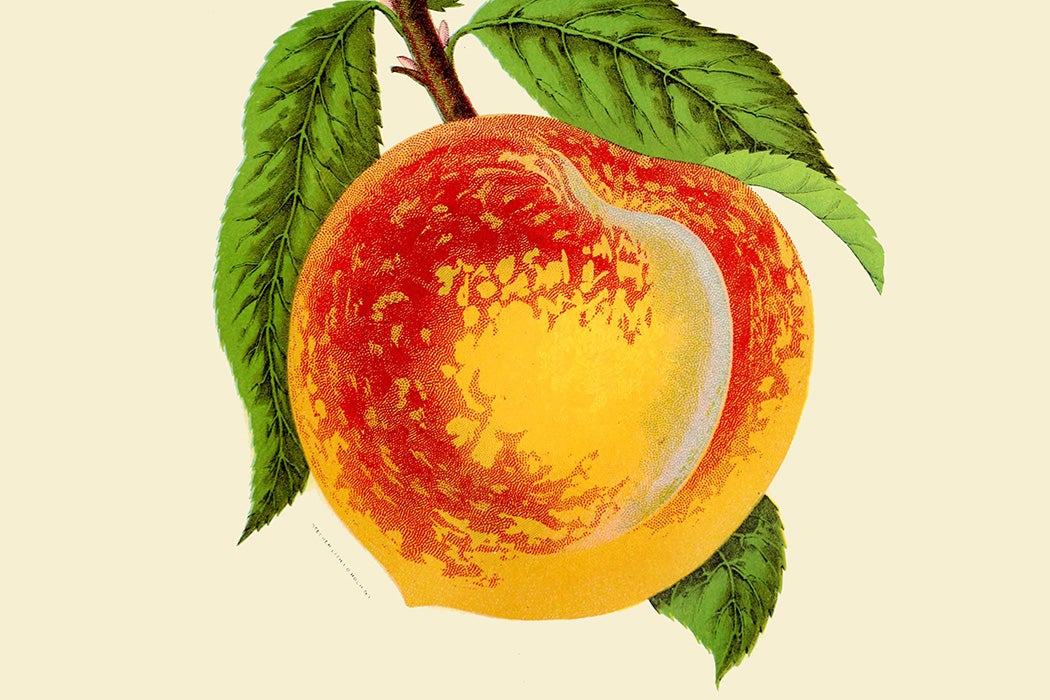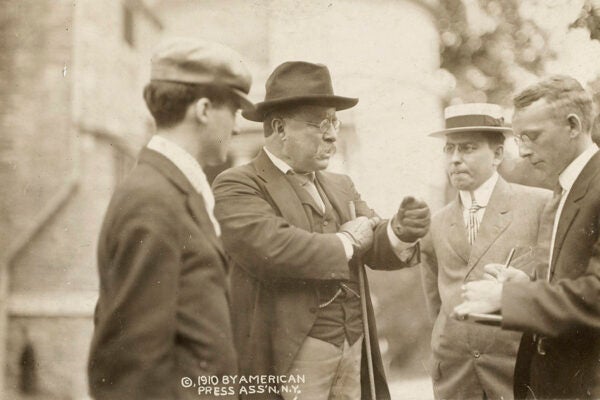A Georgia peach is one of the simple joys of summer. But, as historian Tom Okie writes, behind that delicious fruit is a complex history of race, work, and power.
Okie writes that peaches, originally from China, came to Georgia with Spanish Jesuits in the sixteenth century. Native people spread the trees across the southeast in such abundance that, by the eighteenth century, white observers assumed they were indigenous to the area.
At first, white southerners grew peaches mostly for making brandy or feeding hogs, but by the time of the Civil War, some found a profitable business shipping fresh fruit to the northeast by steamship or railroad.
Cotton remained the mainstay of southern agriculture. But by the early twentieth century, the association of that crop with impoverished sharecroppers was an embarrassment to some southerners. Atlanta Constitution editor Henry Grady captured a common spirit by predicting a New South built on technological and scientific advances in areas including agriculture.
The peach was a perfect example of this new kind of crop, with desirable varieties developed by horticulturalists and shipped to far-off markets in refrigerated transport. The amount of land in Georgia dedicated to peach trees grew from under 28,000 acres in 1890 to almost 150,000 in 1925.
Along with the climate and availability of land, boosters noted that Georgia’s suitability for peach growing depended on a plentiful supply of skilled labor. Horticulturist John Howard Hale, a Connecticut transplant to Georgia, told a Congressional commission that Black workers were both quick to learn tricky horticultural techniques and, paradoxically, childlike and easily controlled. Okie notes that Hale conveniently failed to mention the role of Jim Crow laws and strictly maintained economic inequality in keeping workers compliant.
While advocates for transforming the cotton economy pointed to peaches as the way of the future, in reality the success of peach orchards depended on the way the growing seasons of the two crops meshed together. Peaches ripened in the summer, after cotton planting and hoeing were done for the year but before the cotton harvest.
“Production of this New South crop depended on the Old South cotton economy and the racial hierarchy that underwrote that economy,” Okie writes.
Weekly Newsletter
During and after World War II, many Black workers either left the southern countryside for other opportunities or found better jobs outside the agricultural sector. Soon, growers began to complain that the only workers they could find were teenagers or “derelicts.” To employ more dedicated workers, they turned to undocumented immigrants and migrants hired through federal guestworker programs.
While late twentieth-century growers contrasted “hard-working” Latin American migrant workers with “lazy” Black laborers, Okie notes that this ignores differences in the positions of the two groups. Not only could people from lower-income countries improve their lives back home on wages that wouldn’t help Black Americans get ahead, but migrants’ precarious legal status made them subject to coercion in much the same way that Black workers had been in the Jim Crow era.
Teaching Tips
- “Development of Agriculture in Lower Georgia from 1890 to 1920: With a Summary for the Whole State, 1850 to 1920” (1922)
- “Experiment Station of the Georgia State College of Agriculture” (1928)
- “Agriculture in the Interior of Georgia” (1935)
- “Salient Changes in Southern Agriculture Since the Civil War” (1939)
- “Peach Industry in Ante-Bellum Georgia” (1947)
- “Sweet with Bitter: Georgia’s Peach” (1948)
Support JSTOR Daily! Join our membership program on Patreon today.







